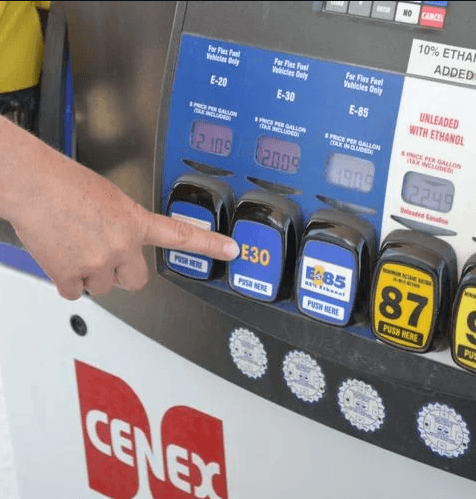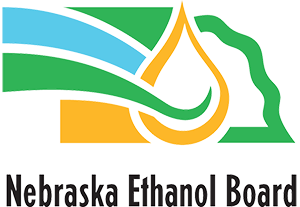
LINCOLN, NEBRASKA – The Nebraska Ethanol Board (NEB) today announced the publication of the interim report for Phase II of the E30 Demonstration. The project is demonstrating the viability of E30 fuel (a blend of 30% ethanol and 70% gasoline) in non-flex fuel vehicles. Phase I was conducted in 2019, and the ongoing Phase II began in 2023. So far, the 94 State of Nebraska light-duty vehicles involved in Phase II have collectively driven more than 215,000 miles on E30 fuel. The research team, from the University of Nebraska-Lincoln, has found further evidence of the conclusions from Phase I: E30 is safe and effective for non-flex fuel vehicles, and E30 is economically viable for broader consumption.
“The results in the interim report are very encouraging,” NEB Executive Director Ben Rhodes said. “While we’re not surprised to learn that non-flex fuel engines can safely utilize E30, it’s still exciting to see the data demonstrate that fact. Plus, the report makes it clear that E30 is far cheaper than E10, which we know is thanks to the inclusion of more ethanol. This price advantage comes with a fuel economy gain for some vehicles on E30 compared to E10—a groundbreaking result—or only a very small reduction that is more than covered by the cost difference. These are all strong signs that mid-level ethanol blends like E30 are a prime long-term option for the world’s transportation energy needs.”
Currently, E30 fuel is only approved for flex fuel vehicles, but the demonstration has specific approval from the U.S. Environmental Protection Agency (EPA) to test E30 in non-flex fuel vehicles. The interim report analyzes data from several key different aspects of vehicle and engine performance, including short- and long-term fuel trim (STFT and LTFT), downstream oxygen (O2) sensor voltage, diagnostic trouble code (DTC) count, fuel economy, engine coolant temperature (ECT), catalytic converter temperature (CT), and throttle parameters. All analysis indicated that engines remained within safe operational margins while using E30.
The interim report highlights the results drawn from data collected by the onboard diagnostic (OBD) tracker connected to each involved vehicle. The vehicles are split into two groups: one control group using E10, and an experimental group using E30, with both groups designed to maximize diversity in vehicle makes, models, years, and engine types. This expands the demonstration beyond the scope of Phase I, which studied a much more limited set of vehicles.
Key results from the Phase II interim report:
· LTFT distributions shift upward and widen under E30 while STFT and downstream O2 sensor behavior remain stable, collectively indicating that modern engine control unit (ECU) strategies effectively manage E30 fueling through long-term adaptation without compromising real-time fuel control or emissions after-treatment.
· For vehicles 2020 – 2024, the average fuel economy for vehicles operating on E30 was 20.75 miles per gallon (MPG), compared to 22.03 MPG for vehicles on E10, a reduction in fuel economy of only 5.8% for E30, which is more than offset by E30’s 16.3% price advantage.
· For vehicles 2003 – 2019, the average fuel economy for vehicles operating on E30 was 17.08 MPG, compared to 15.81 MPG for vehicles on E10, an E30 mileage advantage of 7.5%.
· The average price of E30 in Nebraska was $2.70 per gallon, while E10 averaged $3.22 per gallon, resulting in a 16.28% price advantage for E30.
· No vehicles in either group exhibited coolant temperatures exceeding critical thresholds, indicating that E30 is thermally compatible with modern engine cooling architecture and does not induce abnormal heating or cooling behavior.
· The increased CT observed with E30 enhances catalyst performance without inducing thermal overstress.
· Although the E30-fueled vehicles exhibited higher throttle angle values, all readings remained within safe operational margins, indicating that drivability and engine responsiveness were not compromised.
· Long-term durability testing of E30-fueled vehicles confirmed that the increased throttle activity did not accelerate actuator wear or induce throttle-body fouling, reaffirming the mechanical robustness of current systems under mid-level ethanol operation.
“With a year’s worth of data still to be collected and analyzed, the interim report is clear evidence that Phase II of the E30 Demonstration is moving in the right direction,” Rhodes said. “The report validates all the hard work done so far, and it generates momentum for the remainder of the project. Today’s publication of the interim report marks an important step toward the long-term goal of widespread E30 adoption and use.”
The full interim report can be read here. A final report is expected in late 2026.
The Nebraska Ethanol Board works to ensure strong public policy and consumer support for biofuels. Since 1971, the independent state agency has designed and managed programs to expand production, market access, worker safety and technology innovation, including recruitment of producers interested in developing conventional ethanol, as well as bio-products from the ethanol platform. For more information, visit www.ethanol.nebraska.gov.
###
